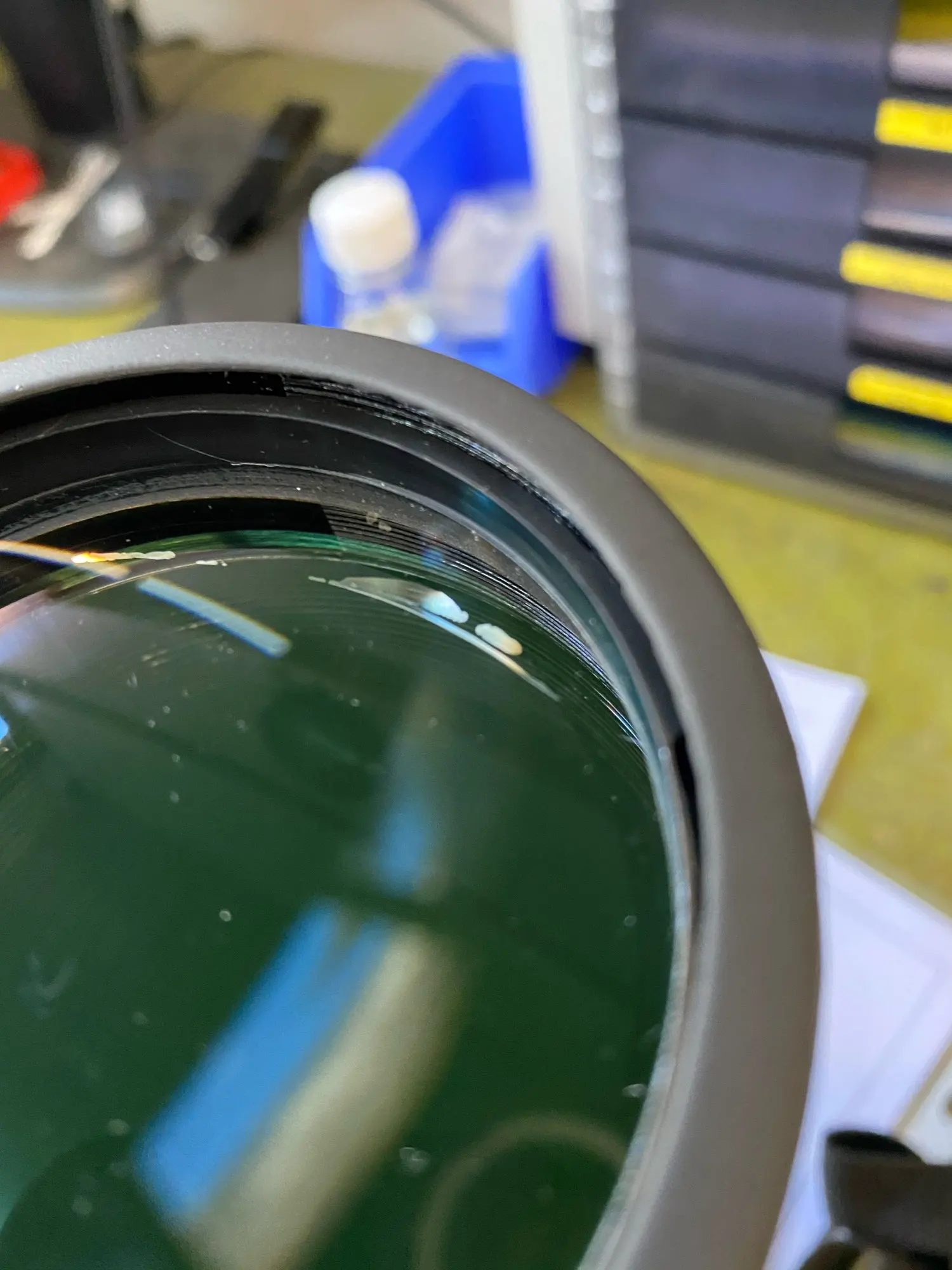SCOKC 15x70 Binoculars HD Lll Night Vision Binocular Glass Objective Lens Outdoor Moon Bird Watching Telescope
Price history
- for 3 month
- for half a year
- Requires Alitools extension
Price drop notification
This item is from other sellers
Similar Products
Customer Reviews
True FOV is indeed ~ 4,5 angular degrees. Eyepiece's lens diameter is 22mm. Eyepieces' visual FOV, by my calculations, is 68 degrees (+/- 2 deg) and it's so wide, you cannot reach its edge by simply looking to the side - you have to turn your head to keep the eye within exit pupil's diameter. Sharpness: in axis excellent, high quality maintained up to ~2/3 way to the edge of the field and even there is good (keep in mind this would be already at the limit of eyeball's field of view), last 20% at the edge - acceptably soft (although I don't think anybody would even try to reach that far to the edge). Interpupillary distance setting works with high resistance - would like it to work half easier. Rubber eyecups are large and deep (maybe even a little too deep, for I noticed I have to press binos hardly towards eye sockets to cover the whole field of view).
Focus setting: one central dial and right eye +/- correction (on seller's other product page where he sells three binos a tech specs table reads: focus system individual, which here does not have place). This is a well made piece of optics, which I'm not afraid to recommend to anyone wanting to enjoy the view - be it earthly or astronomical. Speaking of which: Jupiter observable as a bright disk with its Galileian moons around, Saturn - presents as an elliptical (read: flattened) tiny disk. 15x magnification at the limit of handheld observations (shaky image) but perfectly usable. Overall image quality: hugely satisfying! Great plasticity of an image, beautiful separation of closer and more distant visual planes (a.k.a. 3D feel).
True FOV is indeed ~ 4,5 angular degrees. Eyepiece's lens diameter is 22mm. Eyepieces' visual FOV, by my calculations, is 68 degrees (+/- 2 deg) and it's so wide, you cannot reach its edge by simply looking to the side - you have to turn your head to keep the eye within exit pupil's diameter. Sharpness: in axis excellent, high quality maintained up to ~2/3 way to the edge of the field and even there is good (keep in mind this would be already at the limit of eyeball's field of view), last 20% at the edge - acceptably soft (although I don't think anybody would even try to reach that far to the edge). Interpupillary distance setting works with high resistance - would like it to work half easier. Rubber eyecups are large and deep (maybe even a little too deep, for I noticed I have to press binos hardly towards eye sockets to cover the whole field of view).
Focus setting: one central dial and right eye +/- correction (on seller's other product page where he sells three binos a tech specs table reads: focus system individual, which here does not have place). This is a well made piece of optics, which I'm not afraid to recommend to anyone wanting to enjoy the view - be it earthly or astronomical. Speaking of which: Jupiter observable as a bright disk with its Galileian moons around, Saturn - presents as an elliptical (read: flattened) tiny disk. 15x magnification at the limit of handheld observations (shaky image) but perfectly usable. Overall image quality: hugely satisfying! Great plasticity of an image, beautiful separation of closer and more distant visual planes (a.k.a. 3D feel).









